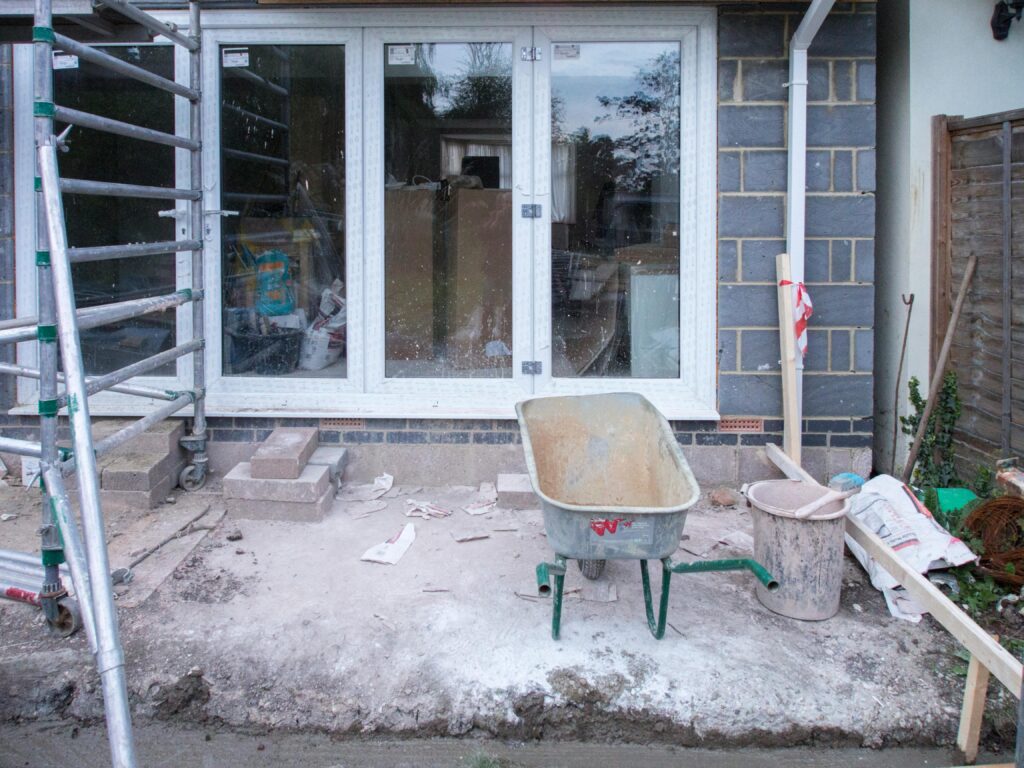
In the world of construction, success depends not only on the skills of the workforce or the quality of design but also on how effectively resources are managed. Materials and equipment are the lifeblood of any project. From cement and steel through to scaffolding, machinery, and vehicles, these assets must be planned, tracked, and utilised with precision. A shortage of essential materials can bring work to a halt, while the misuse or misallocation of equipment can lead to delays, budget blowouts, and even safety risks.
Traditionally, managing these resources has been a complex and often chaotic task. Many companies have relied on manual spreadsheets, paper records, or fragmented communication across multiple teams. The result has often been inefficiency, duplication, and costly mistakes. In recent years, however, construction software has revolutionised this aspect of project management. By offering real-time tracking and integration across teams and functions, modern digital platforms are enabling businesses to take control of their materials and equipment like never before.
This blog will explore how construction software is transforming the management of resources in real time, why this shift is vital for today’s industry, and what businesses need to consider when implementing such solutions.
The Challenges of Traditional Resource Management
Before the digital era, most construction firms managed their materials and equipment using manual methods. Site supervisors might keep paper records of deliveries, procurement teams might use separate spreadsheets to track orders, and project managers might rely on phone calls or emails to stay updated.
This approach was riddled with challenges. Miscommunication was common, leading to duplicated orders or shortages. Paper records were easily lost or damaged, while spreadsheets often became outdated almost as soon as they were updated. When multiple teams worked across different sites, the lack of centralised information made it difficult to gain a clear picture of what resources were available and where.
Equipment management presented its own set of problems. Machinery such as cranes, excavators, or generators might sit idle at one site while urgently needed at another. Without accurate visibility, businesses struggled to allocate equipment effectively, resulting in wasted time and increased costs. In some cases, a lack of proper monitoring also led to equipment misuse, poor maintenance, and unexpected breakdowns.
These inefficiencies directly affected project outcomes. Delays became more likely, budgets were stretched, and relationships with clients were put under strain. In an industry where profit margins are often tight and deadlines strict, the need for more efficient resource management was clear.
The Rise of Real-Time Construction Software
Construction software has emerged as a powerful response to these challenges. By digitising the management of materials and equipment, it enables businesses to gain real-time visibility and control over their resources.
Modern platforms integrate procurement, logistics, site operations, and financial management into a single system. Materials can be tracked from the moment they are ordered through to delivery, storage, and use on site. Equipment can be scheduled, monitored, and relocated as required, ensuring that it is always used where it will deliver the most value.
The key innovation lies in real-time data. With cloud-based systems, information entered at one point—whether by a supplier, site manager, or foreman—is instantly visible across the entire organisation. This eliminates the silos and delays associated with traditional methods, allowing for faster, more informed decision-making.
Managing Materials in Real Time
One of the most significant benefits of construction software is the ability to manage materials with a level of precision that was previously unattainable.
Accurate Tracking and Forecasting
Real-time tracking means that businesses can monitor stock levels across multiple sites, warehouses, or storage facilities. If supplies of a critical material are running low, the system can flag the issue before it becomes a problem, allowing procurement teams to reorder in time. Conversely, if materials are sitting unused, managers can quickly identify the surplus and reallocate them elsewhere, reducing waste.
Forecasting tools take this a step further by analysing usage patterns and predicting future demand. This helps companies avoid both shortages and over-ordering, keeping costs under control while ensuring projects run smoothly.
Integration with Suppliers
Many construction software platforms also integrate directly with suppliers. Orders can be placed electronically, deliveries tracked in real time, and invoices processed automatically. This streamlines the procurement process, reduces the risk of errors, and improves relationships with vendors.
Integration also provides transparency. If a delivery is delayed, the system can alert managers immediately, allowing them to adjust schedules or source alternative materials without losing time.
Compliance and Quality Control
Materials management is not just about availability; it is also about quality and compliance. Construction software enables businesses to record certifications, batch numbers, and inspection results, ensuring that materials meet the required standards. This is particularly important in an industry governed by strict regulations and safety codes.
By maintaining a digital audit trail, companies can demonstrate compliance easily, protecting themselves against legal risks and reputational damage.

Equipment Management in Real Time
Just as important as materials is the management of equipment. Construction software provides powerful tools to ensure that machinery and tools are always available, properly maintained, and efficiently allocated.
Scheduling and Allocation
With real-time visibility, managers can see exactly where each piece of equipment is located and how it is being used. This allows them to allocate resources more effectively, ensuring that machinery is deployed where it is most needed. If a project requires additional equipment, managers can check availability instantly and reassign assets from other sites rather than renting or purchasing unnecessarily.
Preventive Maintenance
Equipment breakdowns are a major cause of delays in construction. By integrating maintenance schedules into the software, businesses can ensure that machinery is serviced regularly and in line with manufacturer recommendations. Real-time monitoring can also flag potential issues, such as unusual usage patterns or performance problems, before they lead to costly breakdowns.
This proactive approach extends the lifespan of equipment, improves safety, and reduces unplanned downtime.
Cost Control
Equipment is often one of the most expensive assets in a construction business. Real-time management allows companies to monitor utilisation rates and ensure they are getting maximum value from their investments. If machinery is consistently underutilised, it may be more cost-effective to sell or lease it rather than maintain it unnecessarily. Conversely, high utilisation may justify the purchase of additional units.
By providing detailed insights into equipment usage, construction software enables smarter financial decisions and tighter cost control.
Enhancing Collaboration and Communication
One of the less obvious but equally important benefits of construction software is its impact on communication. Managing materials and equipment involves multiple stakeholders, from procurement officers and site supervisors to suppliers and clients. Traditionally, miscommunication has been a major source of delays and errors.
Real-time platforms create a single source of truth. Everyone works from the same data, reducing misunderstandings and ensuring that all parties are aligned. Notifications, alerts, and updates can be shared instantly, keeping teams informed and responsive.
This improved communication also strengthens collaboration. When site managers can see procurement schedules, and procurement teams can view site requirements, planning becomes more coherent and effective. The result is smoother project delivery and stronger client satisfaction.
The Broader Impact on Project Performance
The real-time management of materials and equipment does more than solve logistical headaches; it directly impacts overall project performance.
Improved Efficiency
By ensuring that resources are always available when needed and used effectively, construction software eliminates downtime and maximises productivity. Workers spend less time waiting for materials or equipment, and projects move forward without unnecessary interruptions.
Cost Savings
Better visibility and control reduce waste, minimise unnecessary purchases, and optimise equipment usage. Over time, these savings can be substantial, improving profitability in a sector where margins are often thin.
Risk Reduction
Real-time monitoring helps identify potential problems early, whether it is a delayed delivery, a shortage of key materials, or a piece of equipment in need of maintenance. Addressing these issues proactively reduces the risk of costly delays, safety incidents, or compliance breaches.
Competitive Advantage
Firms that embrace construction software often gain a competitive edge. By delivering projects more efficiently, reliably, and profitably, they can build stronger reputations and win more business. In an industry where competition is fierce, this can be a decisive factor.
Overcoming Barriers to Adoption
Despite the clear benefits, some businesses remain hesitant to adopt construction software. Concerns about cost, complexity, or resistance to change are common.
The key to overcoming these barriers lies in careful planning and implementation. Choosing the right platform—one that suits the size and needs of the business—is essential. Training is also critical; employees must be confident and comfortable using the system if it is to deliver value.
Change management is equally important. Businesses should communicate clearly about why the software is being introduced, what benefits it will bring, and how it will improve day-to-day operations. By involving staff in the process and addressing their concerns, companies can foster buy-in and ensure a smoother transition.
It is also worth noting that the cost of inaction can be greater than the cost of adoption. In an industry increasingly shaped by digital transformation, firms that fail to modernise risk falling behind their competitors.
The Future of Real-Time Resource Management
Looking ahead, the role of construction software in managing materials and equipment is likely to grow even more sophisticated. Emerging technologies such as the Internet of Things (IoT), artificial intelligence (AI), and predictive analytics are already being integrated into leading platforms.
IoT sensors can track the condition and location of equipment in real time, providing even greater accuracy and control. AI algorithms can analyse vast amounts of data to predict future needs, optimise procurement, and identify inefficiencies. Drones and mobile apps are being used to monitor stockpiles, verify deliveries, and update systems directly from the field.
As these technologies develop, the potential for construction businesses to achieve new levels of efficiency, safety, and profitability will only increase.
Managing materials and equipment has always been one of the greatest challenges in construction. Delays, shortages, and misallocation have long plagued projects, costing time, money, and reputation. Real-time construction software offers a transformative solution. By providing accurate visibility, seamless integration, and proactive control, it enables businesses to manage resources more efficiently than ever before.
From accurate forecasting and supplier integration to preventive maintenance and cost control, the benefits are wide-ranging. Beyond logistics, real-time management strengthens communication, improves collaboration, and enhances overall project performance.
For construction firms determined to stay competitive in a rapidly evolving industry, adopting real-time software for materials and equipment management is no longer optional—it is essential. The future of construction lies in digital tools that turn complexity into clarity and challenge into opportunity. Those who embrace this change today will be the ones leading the industry tomorrow.
In today’s construction landscape, efficiency and accuracy are paramount. Construction management software, like Wunderbuild, revolutionises project handling by centralising tasks, from scheduling and budget management to communication and document control. This integration enhances productivity and ensures projects are completed on time and within budget, making it an essential tool for modern construction professionals. Embrace Wunderbuild here to begin streamlining your construction processes and boost your project’s profitability.




